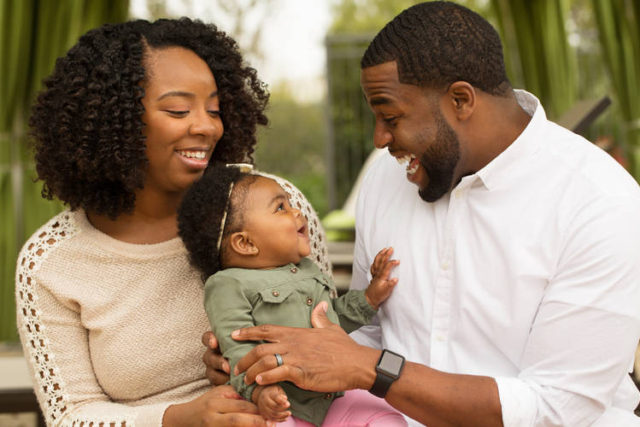Communication is the most important skill to teach children. It allows them to tell us their needs and wants and to voice when something is wrong. Disorders considering communication are prevalent and problematic. Communication is taught, and there are ways to help children learn.
It is estimated that 10 percent of Americans presently has or has had some type of communication disorder. Communication disorders include difficulties with speech, language, and factors that help carry on a conversation like listening, staying on topic, and knowing how to start and end a conversation.
A child with poor communication skills risks being wrongfully diagnosed with ADHD or autism. This can lead to the child being medicated and believing that something is wrong with them. Communication doesn’t come naturally, and teachers, caregivers, and parents need to teach children to communicate because not learning will cause problems into adulthood.
Communication takes a lot of time and effort to develop. The child must be immersed in an environment where proper communication is modeled. Here are 15 tips to help children learn how to talk and communicate.
1- Don’t use baby talk. Use real words. A baby starts learning communication from the beginning of life by observing the interactions that it has with adults and the interactions of adults with each other. Using real words while keeping eye contact and a loving tone of voice will help a baby get a great start.
2- Don’t use electronic talking toys. The speech within these devices is often poorly pronounced, accompanied by distracting sounds and music, and completely random. When electronic devices use random language, it does not teach the valuable skills of listening and staying on topic.
3-Limit TV exposure. Like toys, TV shows can be accompanied with sounds and music that muffle language. It also does not provide eye contact and personal interactions relevant to the child’s life and environment. Furthermore, TV conversation is made to entertain, not to teach—it is over dramatized, unrealistic and emotionally unintelligent.
4- Take baby with you to run errands and converse with others with baby present. Taking a baby along when you are in public or visiting friends is a good way to model communication. You may have noticed that an infant is often completely content listening to an adult conversation. They are taking notes when they see their parents communicate with others.
5-Don’t be afraid to correct speech. Children want to learn, and they will be happier when they can tell you their wants and needs. Don’t view correcting their speech as something that will harm their esteem. Instead, view correcting them as teaching them a tool that will enhance their esteem because it will help them interact with others and make their voice heard.
6- Talk to them a lot. Talk to your baby from the beginning, even if it means that you are narrating what you are doing. A simple act of narrating a diaper change will model speech while helping familiarize daily tasks. It can also make them aware of their bodies and their involvement in the world.
7- Let them know that you are listening. Look them in the eyes when they talk and repeat what they have said to let them know that you heard them. This can be started when they are a baby. Show them that you are delighted with their coos and the sounds that they make—this is them starting to use their voice. When they start using words, repeating not only lets them know that you are listening, but can be a gentle form of correcting their speech by repeating mispronounced syllables correctly.
8- Tell them the words for objects so that they learn the world around them and the words that they need to use to talk. Walking around and telling a baby what things are is helpful, especially once a child learns to point and question what something is. Picture books (Not the kind of books that have a button to push that says the word, but the type that you look at with your child.) are also helpful for early word learning. Look for cues that they are remembering.
9- Read to them. Reading helps them hear words pronounced calmly and properly and allows time for bonding. It also gets them interested in books.
10- Make sure the child can hear. This includes limiting background noises and choosing children’s music that has clearly spoken words without obnoxious sound effects.
11– Encourage them to use their words all of the time. Parents remember to encourage word use when a child is throwing a fit, but it is easy to forget to encourage word use when the child is calm. Encourage children to participate in their environment. Let them inquire and learn about sights, sounds, places, people, pets, etc. Building comfort in their environment allows them to feel better about using their voice.
Toddler talk may start out with the child narrating what they are doing or repeating things. Encourage any talk. Tell them that you love it when they tell you what they are doing and thinking. Ask them questions to get them to elaborate further on their thoughts and observations.
As toddlers get older, they are capable of expressing more thoughts and feelings, but they initially need help identifying their emotions. If you notice an emotion, let them know that you notice, and inquire about it. Try to put a name on the emotion (sad, angry, hurt, happy, hungry, sleepy, etc.) so that they can learn what emotion they are feeling. Let them know that telling you what they think and feel is important and that you are happy when they do so.
My son likes to talk about things he is watching people do and make predictions. For example, he was watching someone use a pressure washer, and they stopped momentarily. My son said, “They are going to turn it on again.” I told him that was a good prediction, but there is no way to know for sure what someone is thinking, or feeling unless they communicate it.
I use situations like this to remind him how important of a tool talking and communication is and that we can’t read someone’s mind. I constantly tell him what I expect, think and feel. I remind him that I am telling him such things so that he knows, and so that he can tell me what he expects, thinks and feels in return. Let children know that that you value their voice and that they should value it too.
12- Get caregivers to give the child plenty of one-on-one time and to communicate with the child. The more positive adult interactions that a child has, the better they will communicate. If the care giving scenario is a daycare in which there a multiple children entrusted to a single adult, the child will get less modeling of proper communication.
13- Don’t force a child to talk to strangers. Encouraging a child to use their words or to answer when you ask a question is different than forcing them to give hugs and talk to people that they do not feel comfortable with (including teachers and caregivers). If a child has to warm up to a person before wanting to talk, this is okay. Forcing a child to talk people that they are not comfortable with is not endorsed.
14- Use sign language, but only when needed. If a child is only able to communicate by signing, then, sign communication is better than no communication at all. Usually, if a child can sign, they can learn to talk. If a child has a choice between signing or using their voice, they will likely choose to sign because it is easier. The child must be encouraged to use their voice.
15- Don’t underestimate them. Children understand a lot more than they communicate. They are very capable, but they could never have too much encouragement.
Communication takes years of constant modeling and repetition to learn. You must teach communication skills to your child, but your work is rewarded by being able to connect with your child. Communication allows you to get into your child’s world, and there is no place you would rather be!







